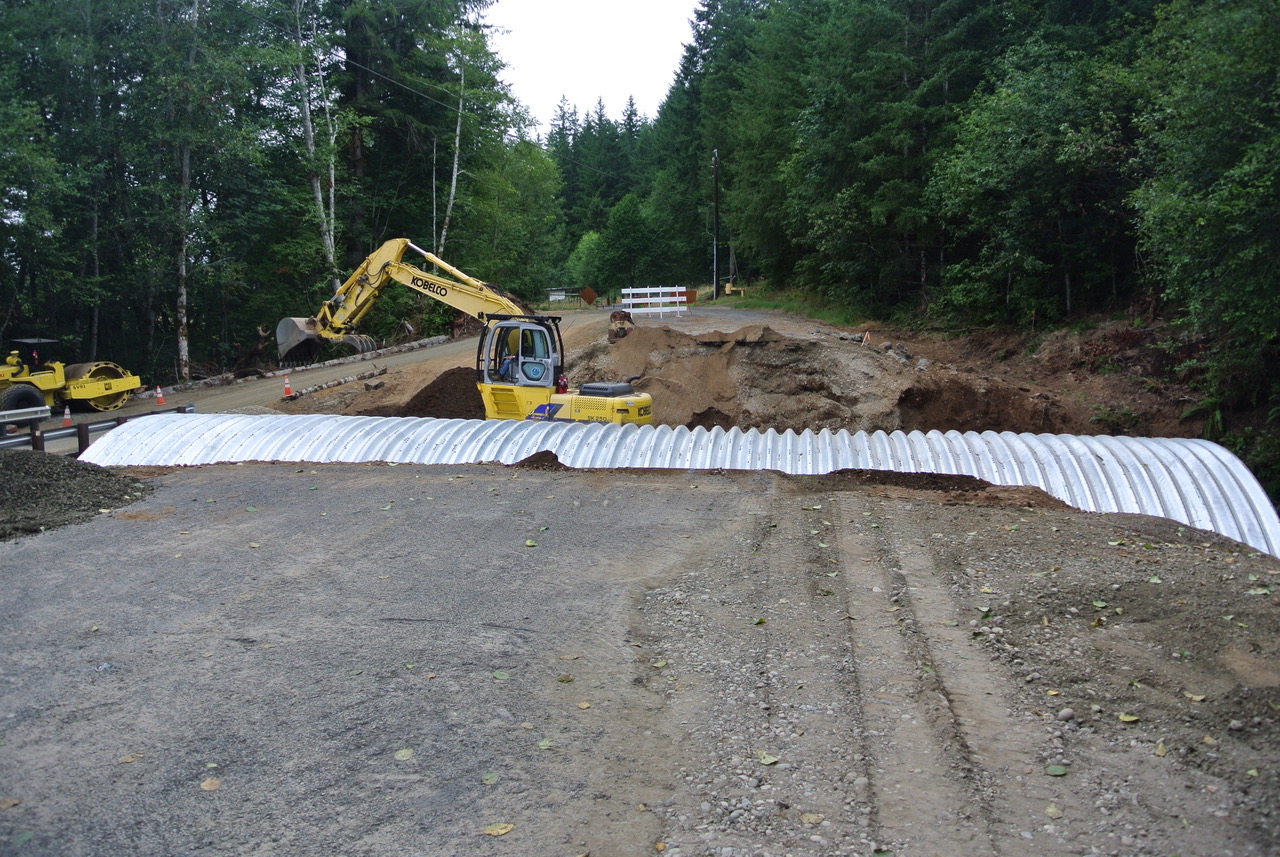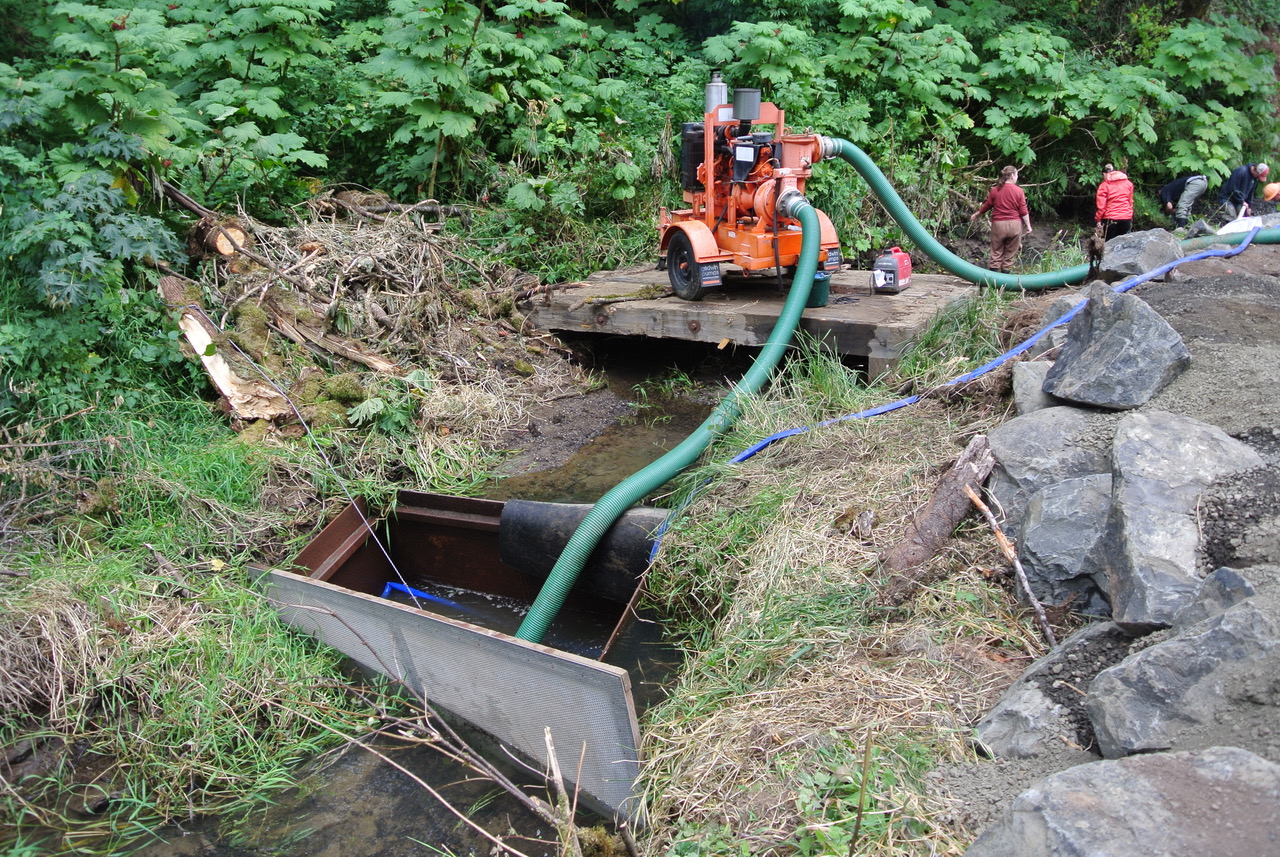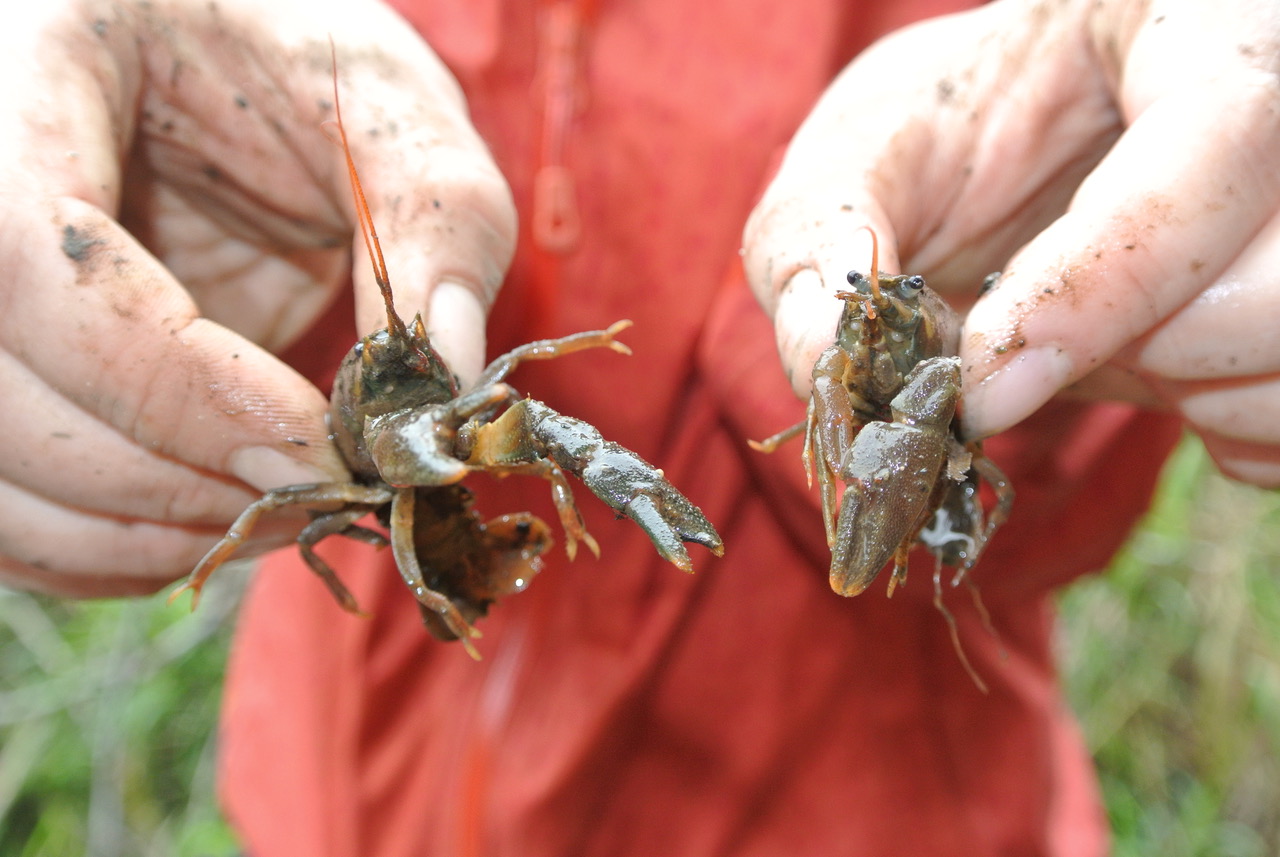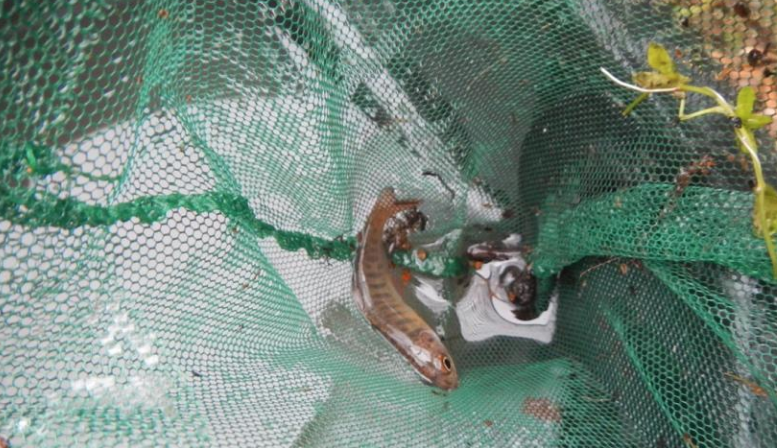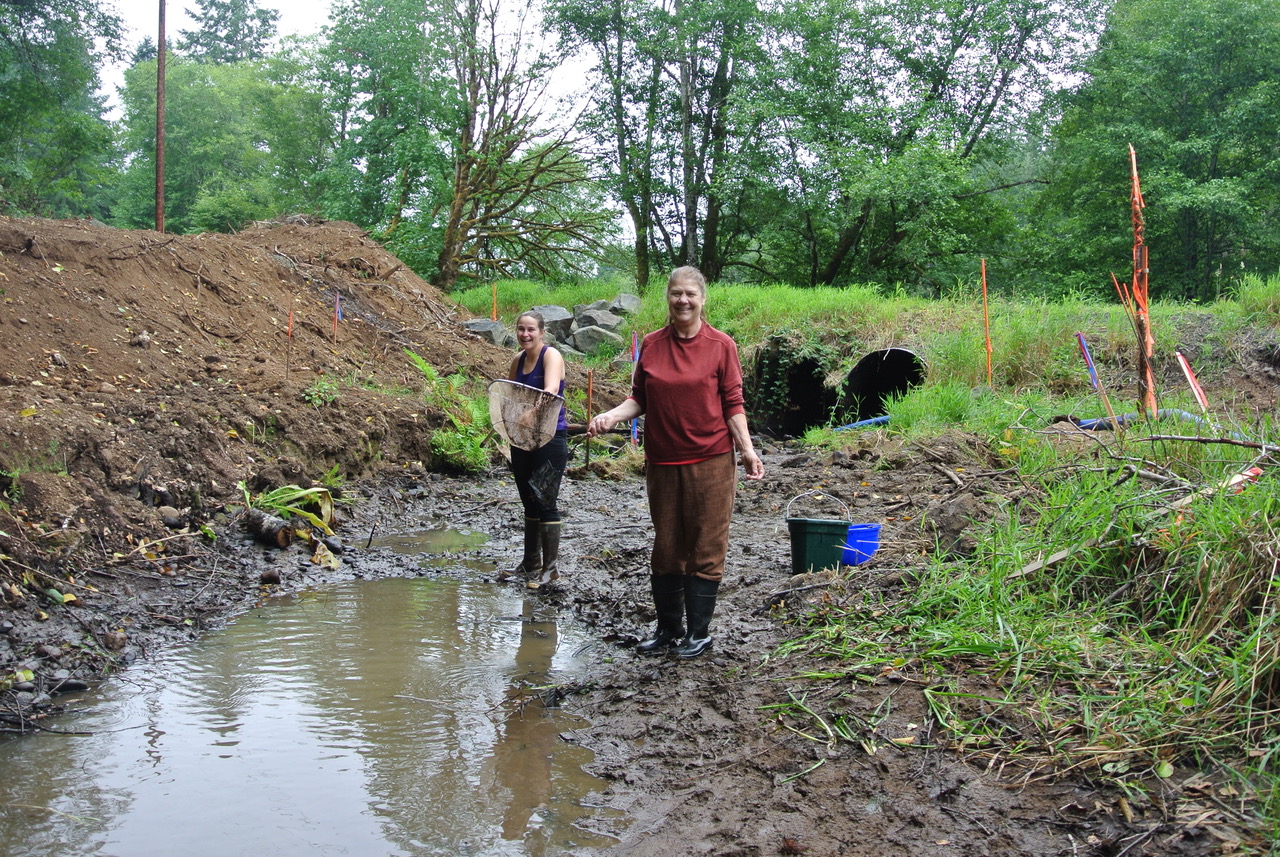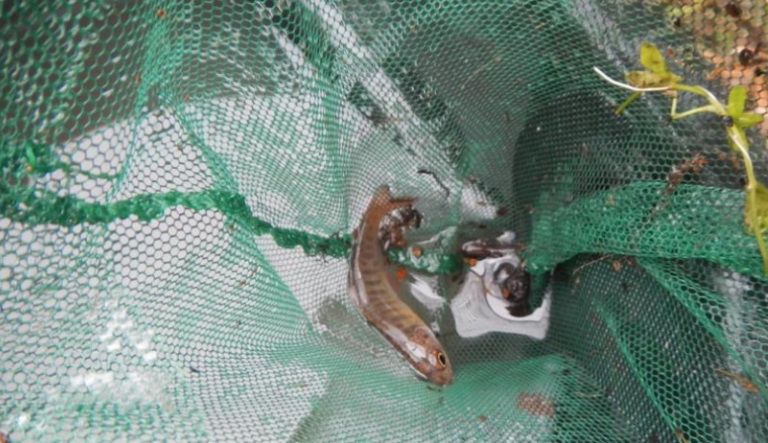
By Twin Harbors Waterkeeper Lee First
Wading softly through the mud of Bush Creek, I netted lampreys, crayfish, snails, beetles, worms, and clams. Every so often, one in our little group of volunteers cheered after netting a Coho salmon fry.
We were helping to rescue small aquatic animals in a temporarily dewatered stream. A new culvert was being placed. In Washington State, thousands of undersized culverts and other fish passage barriers prevent salmon from reaching important habitats and spawning gravel. The giant new culvert in the photo below has been placed under a road crossing at Bush Creek, a tributary of Cloquallum Creek in the Chehalis River watershed. It is replacing two much smaller pipes that blocked fish passage most of the time. Restrictive pipes like these have long prevented migrating fish from reaching 32.5 miles of crucial stream habitat in the Chehalis River basin.
But the tide is turning. During the summer of 2019, 16 more culverts in Grays Harbor and Lewis counties will be redesigned or reconstructed. Three replacements are currently underway on Bush Creek alone. A recent state Supreme Court decision affirmed a lower court’s order that Washington State must undertake massive repairs to roads (including culverts and below-road channels) that have damaged salmon habitats and contributed to population declines. As these barriers are remedied, salmon will have the benefit of miles of additional high-quality habitat.
Most of this work is done in mid-summer, when water levels are low. During these times, the fewest fish are present, minimizing harm to the streams from the necessary construction and excavation; by law, fish must be rescued during the time that water is blocked and re-routed around the culvert. A project like this takes a lot of time, planning, money, and environmental permits. Volunteers usually spend most of a day performing these rescue operations.
The photo above shows the equipment needed to block the flow of the stream to perform the rescue. The construction crew set up this system of screens and pumps, then metered out the water towards the stream section where six volunteers were prepared with boots, nets, and buckets to give the animals safe passage.
We wait for the stream water containing the animals to be slowly released. Then we carefully wade around, scooping the animals up with small nets. Once we’ve captured a few, we put them in a bucket of cold water then release them into an unimpacted section of Bush Creek downstream from the culvert.
My first time working at a project like this, I was amazed by the diversity of animals we found. Though the immediate upstream area of Bush Creek does not have an especially impressive riparian buffer, there were a lot of animals to save. It was especially satisfying to catch Coho, lamprey, and crayfish—fast little escape artists! I found most of these by searching around on the recently dried mud just below the water line and looking for twitching.
There is only one native crayfish species in Washington: the signal crayfish, Pacifasticus leniusculus. All of its surfaces, even its claws, are uniformly brownish and smooth compared to other crayfish species. Native crayfish like these are very sensitive to pollution. We found many that were tiny, so catching these bigger specimens was extra fun.
Of all the salmon species in the Chehalis watershed, Coho salmon spend the most time in their natal streams before they out-migrate to the ocean. Whenever we found one, we made every effort to transport them back into the unimpacted stream as soon as possible.
Experts estimate that the current populations of Washington’s coastal wild salmon runs are 10 percent of what they were just 100 years ago. The causes of this decline include intensive agriculture, forestry practices, pollution, a changing climate, floodplain development, diking/draining of estuaries, and more.
There are many, many ways for citizens to get involved with and help out with salmon restoration. If you have time to help out at a culvert replacement project, let us know. It’s a great way to learn more about your local stream, its ecology, and the sensitive critters that depend upon clean water. In the Chehalis watershed, check with us, Twin Harbors Waterkeeper, or the Chehalis Basin Fisheries Task Force for upcoming opportunities.
